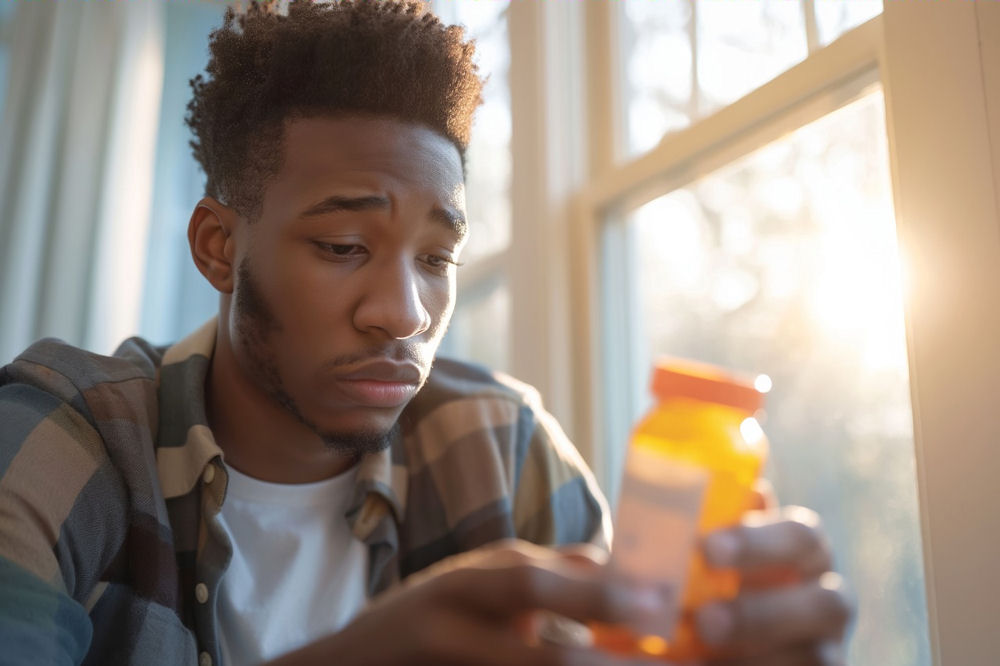Dealing with benzodiazepine addiction in Van Nuys is a real issue, and it’s one that often doesn’t get the attention it deserves. Medications like Xanax, Valium, and Klonopin (frequently prescribed for anxiety symptoms or insomnia) can lead to dependence even with legitimate use. Many people don’t realize their reliance until withdrawal symptoms, ranging from insomnia to seizures, make quitting unsafe without medical support.
The state’s approach combines medical expertise with personalized care, recognizing that recovery requires more than stopping the drug. Treatment for addiction often includes cognitive behavioral therapy (CBT) to address underlying anxiety or trauma, and to help the addicted person recognize the patterns in their actions and thoughts that lead them to use addictive substances. With benzodiazepine-related hospital visits rising in recent years, accessing professional help has become critical for those struggling to break the cycle.
What is Benzodiazepine Addiction and Why is it so Dangerous?
Benzodiazepine addiction can form surprisingly fast, sometimes after just a few weeks of use. These medications (including well-known names such as Xanax, Ativan, Valium, and Klonopin) work by enhancing the calming neurotransmitter gamma-aminobutyric acid (GABA) within the brain. This works to produce a sedative effect, easing anxiety, promoting sleep, and in some cases aiding muscle relaxation.
The brain adapts to benzodiazepine use by reducing its own GABA function. This causes tolerance, requiring higher doses for the same effect, and dependence. Abrupt cessation of benzo use leads to withdrawal symptoms like anxiety, insomnia, tremors, and seizures, making quitting difficult without support.
Beyond physical dependence, prolonged use can impair memory and thinking, impact coordination, increase fall risk, and elevate the danger of driving under the influence (especially if combined with alcohol or opioid use). Its use alongside other depressants can suppress breathing to dangerous levels, even causing death.
How Long do Benzodiazepines Stay in the Body?
The amount of time benzodiazepines stay in your system varies quite a bit, depending on the specific drug and the type of detection test used. This information can be especially relevant during benzodiazepine addiction treatment, as lingering levels may affect withdrawal timing and monitoring.
Different benzodiazepines fall into three categories based on their elimination half-life (the time it takes for half of the drug to leave the system): short‑acting (such as triazolam), intermediate‑acting (lorazepam), and long‑acting (diazepam and chlordiazepoxide).
Short‑acting agents typically have half-lives of around 6 to 15 hours. Intermediate benzodiazepines like lorazepam fall into a range of roughly 10 to 20 hours. Long‑acting compounds such as diazepam may stick around much longer, with half-lives from 30 to over 100 hours, making them detectable in the body for days or weeks after use.
Detection windows also depend on the method used:
- Urine tests can detect short-acting benzos for 1-5 days, intermediate ones within the same timeframe, and long-acting ones for up to 6 weeks in heavy, chronic users.
- Blood tests are more immediate, typically detecting drugs for up to a day in fast‑clearing benzos and maybe a few days for long‑acting types.
- Saliva testing usually finds benzodiazepines for up to two or three days.
- Hair follicle screening can reveal benzo use for months, often up to 90 days.
Here are specific examples of detection: alprazolam is often found in urine for several days after last use, while diazepam may still appear in urine six weeks later and in hair tests up to three months after.
Beyond bio-detection, the clinical side of benzodiazepine addiction treatment must consider lingering effects. Longer‑acting drugs may delay withdrawal and require a slower taper. Monitoring through testing can help guide safe dosage reduction, prevent relapse, and help clinicians know when medical supervision is needed.
Common Symptoms of Benzodiazepine Addiction
Here are the most common symptoms of benzodiazepine addiction, broken into physical, psychological, and behavioral signs to help spot warning signals early.
- Shakes, muscle tension, and body aches
- Headaches
- Dizziness
- Digestive issues like nausea or diarrhea
- Changes in appetite
- Sleep problems, including restless nights and sudden jolts from sleep
- Heart palpitations
- Sweating
- Dry mouth
- Increased sensitivity to light or sound
- Heightened anxiety far above baseline levels
- Panic attacks
- Sudden spikes in nervousness
- Memory lapses
- Trouble concentrating
- Slowed thinking processes
- Mood swings
- Low mood or depression
- Irritability
- Emotional lows
- Perceptual disturbances such as sensory changes, derealization, or depersonalization
- Persistent cravings or strong urges to take benzodiazepines
- Using in larger amounts or for longer than intended, with unsuccessful attempts to cut down
- Seeing multiple doctors or pharmacies
- Concealing benzo use
- Faking prescriptions
- Neglecting work, school, family duties, or usual activities in favor of using benzos
Spotting a mix of these signs can be a strong indicator that professional help is needed. Early engagement in benzodiazepine addiction treatment can ease withdrawal, address emotional and cognitive symptoms, and support recovery toward a healthier routine.


What Can You Expect from Benzodiazepine Addiction Treatment Programs?
Expect these main phases in benzodiazepine addiction treatment:
A comprehensive intake evaluates medical history, benzodiazepine dosage and duration, co‑existing mental health issues, and personal challenges. This ensures every step of benzodiazepine addiction treatment is tailored to individual needs.
Detox begins with a slow dose reduction, often transitioning to a longer‑acting benzo like diazepam. Medical supervision monitors vital signs to reduce risks like seizures or delirium. This phase usually lasts 2 to 6 weeks, depending on severity.
Adjunct medications, such as anticonvulsants, antidepressants, sleep aids, Buspirone, or flumazenil, may ease withdrawal symptoms, stabilize mood, and lower relapse risk.
Individual counseling, cognitive-behavioral therapy (CBT), motivational interviewing, and group therapyhelp address anxiety, stress, triggers, and thought patterns. Holistic options like mindfulness, yoga, or art therapy are often included.
Inpatient programs offer 24/7 monitoring and structured care, which is ideal for complex cases or co‑occurring conditions, while outpatient settings provide ongoing therapy and support for those able to remain at home.
Continued addiction-centered therapy, peer support groups like SMART Recovery or Narcotics Anonymous, sober living environments, and alumni programs help reinforce recovery habits and reduce relapse risks.
Maintenance may involve periodic counseling, medication adjustment, check‑ins, and lifestyle coaching to support resilience and healthy coping strategies over months or even years.
How Medical Detox Helps with Benzodiazepine Withdrawal
Medical detox plays a critical role in benzodiazepine addiction treatment by managing withdrawal in a controlled, safe environment.
Supervision by medical professionals is essential because abrupt cessation of benzodiazepines can trigger severe symptoms like seizures, delirium, confusion, or psychosis. Medical teams can monitor vital signs, adjust dosages, and intervene immediately if serious complications arise.
Withdrawal typically unfolds in phases. Short-acting benzodiazepines may begin to cause withdrawal symptoms within six to 12 hours of the last dose, while longer-acting types may take several days. Early signs include anxiety returning, insomnia, nausea, headaches, tremors, sweating, rapid heartbeat, and muscle tension. Acute withdrawal peaks between the second day and the second week for short-acting drugs and around the second week for long-acting versions, with symptoms like panic attacks, diarrhea, blurred vision, cognitive lapses, mood swings, and even seizures or hallucinations in severe cases.
Medical detox helps manage protracted withdrawal, which can last months. About 10 to 25% of long-term users experience lingering symptoms like anxiety, insomnia, depression, light/noise hypersensitivity, and muscle twitches. A gradual taper, often with a long-acting benzodiazepine like diazepam, is the safest way to reduce dosage, pausing reductions as needed.
Receive Help for Benzodiazepine Addiction Treatment at Lennox CMHC
Benzodiazepine addiction treatment at Lennox CMHC starts with medical support to safely manage withdrawal. Therapy focuses on individual triggers, such as anxiety or unresolved trauma. No two recoveries look the same, so plans adjust as needed. Practical skills take priority. Patients learn to cope through CBT and peer support, not prescriptions. Relapse prevention is built into daily treatment.
The process is tough, but structured help makes it manageable. Lennox CMHC provides what’s needed to break the cycle. If you’re ready, contact us today to start here.
https://www.nj.gov/health/populationhealth/opioid/
https://www.ohsu.edu/sites/default/files/2025-04/Tapering-Benzodiazepines.pdf
https://www.nejm.org/doi/full/10.1056/NEJMra1611832
https://www.asam.org/quality-care/clinical-guidelines/benzodiazepine-tapering
https://www.cdc.gov/mmwr/volumes/70/wr/mm7034a2.htm
https://www.cdc.gov/overdose-prevention/data-research/facts-stats/sudors-dashboard-fatal-overdose-data.html
